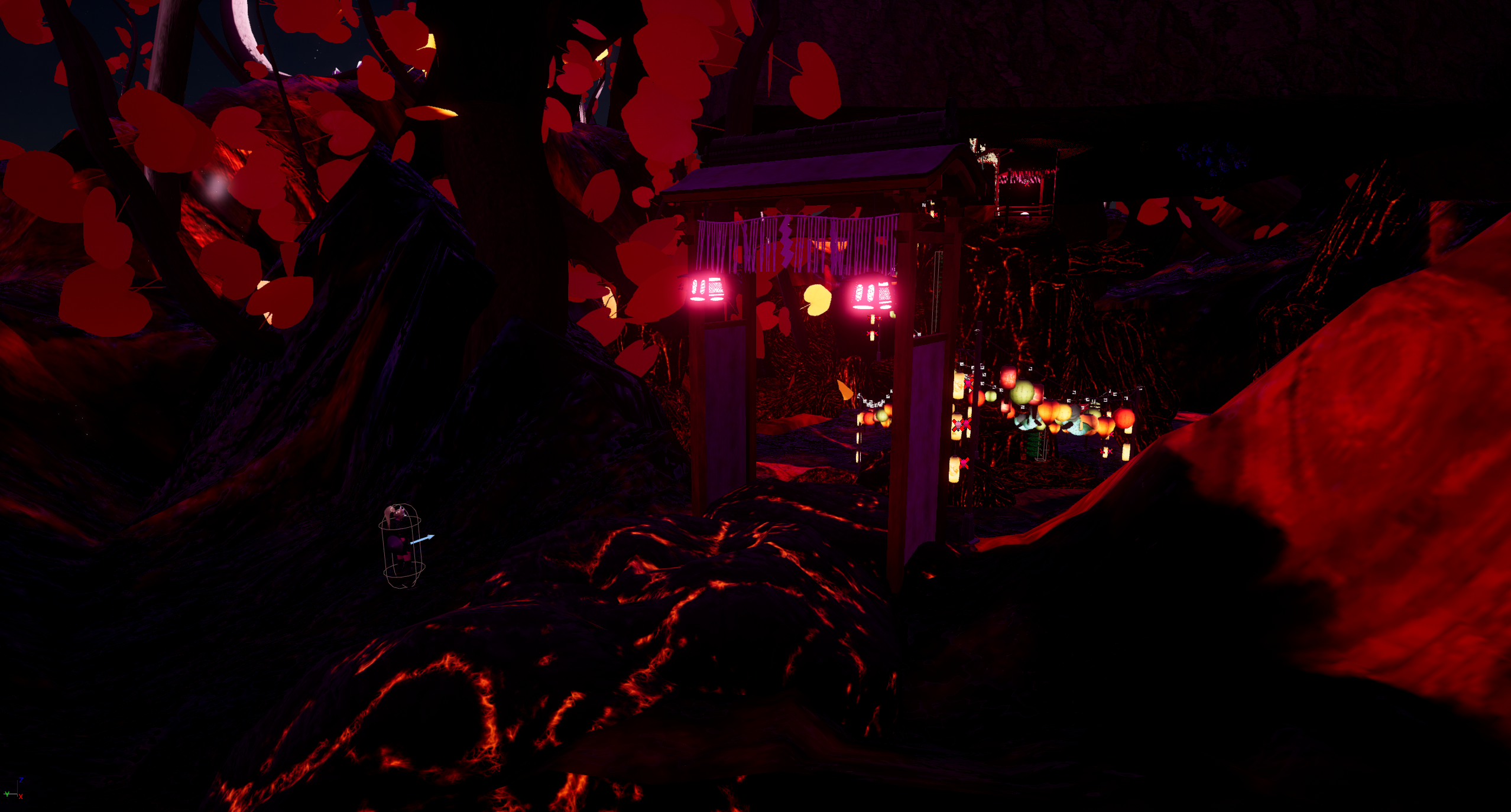SUMERU_Mechanics
GAME
STRATEGIES
MECHANICS
GAME
STRATEGIES
MECHANICS
Camera : Third-Person
Setting : Volcano, Forest, Lake, City
New Mechanic : Dance, Climbing, Swimming, Super Jump
Level Focus : Exploration, Action, Narrative
Setting : Volcano, Forest, Lake, City
New Mechanic : Dance, Climbing, Swimming, Super Jump
Level Focus : Exploration, Action, Narrative
Design Strategies
According to previous research and concept arts, the strategy of designing “SUMERU” world are obvious.
1. Base on the theory of “Five Elements”, I deconstruct landscapes on Earth and take four to five representative environments to design the world maps - landscape creatures.
2. Apply different phase to each level, from chaos to balance, to ignite the transition of phases will be the main goal for players.
3. Set up a parade route that designed from “Animism” parades such as “Hyakkyakou” or “ZhengTou”. The parade route will decorate with lanterns, gates, and shrines, they are also the navigation system, landmarks, and bullet points of the game.
4. Collaborate with dancers to get motion capture data and apply them as special movements and system that will help players to explore the game.
Game World Overview






Game Maps - Landscape Creatures
The game world is combined by four landscape creatures, and there are five levels located inside them.
Those four creatures are :
1. The Volcano Elder - Level “The Lava Pool”
2. The World Tree - Levels “The Hover Trunk” and “The Iris Lake”
3. The Town Machine - Levels “The Nonstop Town” and “The Engine Altar”
4. The Ocean Dragon
Navigation and Narrative- The Parade Route
The parade route is very important in “SUMERU” game world. For narrative perspective, it's the story of the worship of nature itself, and it’ll guides players to rebuild the connection between human and environments. On the other hand, as navigation perspective, since those festival objects are obviously outstanding in the enevironment, players can easily know where to go, what to do, and follow the parade route to explore the world.
There are three basic components in the parade route :
1. The lantern - Lanterns are the foundatian of the whole route, they are the general ways to follow on the map. Lanterns also penertrate the game world and show up as different kinds of forms. They will light up the space for players, show the way to explore, and they are also the provider of spirits to each level.
2. The Special Gate - Special gates are the little goal for players. They have different light colors to distinguish various levels. They are landmarks that players can see from further location and know where exactly to go. The most important is, special gates are the main object to push on progress of the game. They will trigger dances to clean up big obstacles; they will change the light colors of lanterns to show up where to climb; they will launch hover platforms so players can reach somewhere far; they will give players the power of super jump to help them overcome vertical maps.
3. The Transition Shrine - Transition shrines are the bullet point - main goals of each big level. Players will need to follow the parade route and find those shrines to bring the balance back to the particular level and gain the method to go to next level. When players get to the shrine, they will trigger players to dance special dances, and the level will change from chaos phase to harmony phase.
Lanterns







Special Gates






Shrines





SUMERU_Dance Reel
Gameplay Mechanics - Motion Capture and Dance
The “super power” of SUMERU is dancing. The dancing system plays a crucial role in the game, in the narrative perspective, it’s the way how human communicate and attach with nature, it’s also the way how players bring the balance back to the world. As the main mechanic, players are able to trigger dances at special points, such as some special gates or when they reach shrines. Those dances will ignite transitions of the game world. On the other hand, some of the dancing movement are applied to landscape creatures, such as “The Ocean Dragon”, which allows them to show their phase in another way.
To accurately design specific dancing movements of each big level, I collaborate with professional dancers and use the motion capture data as the input for the mechanic.